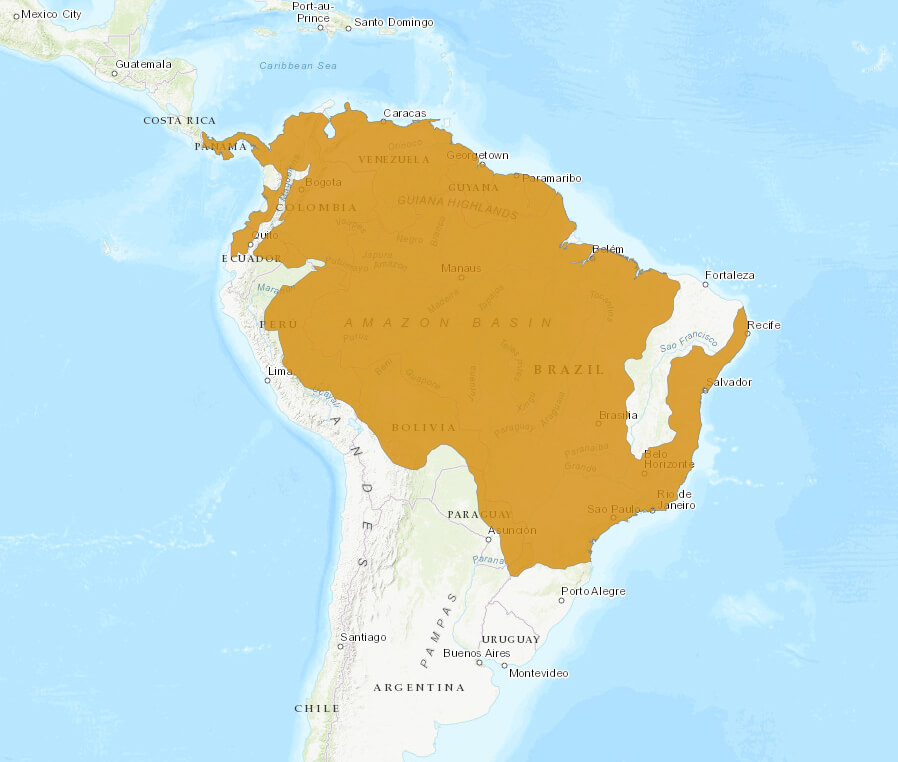Beisiegel, B. M., & Zuercher, G. L. (2005). Speothos venaticus. Mammalian Species, , 1-6.
DeMatteo, K. E., & Loiselle, B. A. (2008). New data on the status and distribution of the bush dog (Speothos venaticus): Evaluating its quality of protection and directing research efforts. Biological Conservation, 141, 2494-2505.
Deutsch, L. A. (1983). An encounter between bush dog (Speothos venaticus) and paca (Agouti paca). Journal of Mammalogy, 64, 532-533.
Kleiman, D. G. (1972). Social behavior of the maned wolf (Chrysocyon brachyurus) and bush dog (Speothos venaticus): a study in contrast. Journal of Mammalogy, , 791-806.
Lima, E. D., Jorge, R. S. P., & Dalponte, J. C. (2009). Habitat use and diet of bush dogs, Speothos venaticus, in the Northern Pantanal, Mato Grosso, Brazil. Mammalia, 73, 13-19.
Michalski, F. (2010). The bush dog Speothos venaticus and short-eared dog Atelocynus microtis in a fragmented landscape in southern Amazonia. Oryx, 44, 300-303.
Michalski, F., & Peres, C. A. (2005). Anthropogenic determinants of primate and carnivore local extinctions in a fragmented forest landscape of southern Amazonia. Biological Conservation, 124, 383-396.
Peres, C. A. (1991). Observations on hunting by small-eared (Atelocynus microtis) and bush dogs (Speothos venaticus) in central-western Amazonia. Mammalia, 55, 635-639.
Silveira, L., Jacomo, A. T. A., Rodrigues, F. H. G., & Diniz, J. A. F. (1998). Bush dogs (Speothos venaticus), in Emas National Park, Central Brazil. Mammalia, 62, 446-449.
Wallace, R. B., Painter, R. L. E., & Saldania, A. (2002). An observation of bush dog (Speothos venaticus) hunting behaviour. Mammalia, 66, 309-311.
Zuercher, G. L., Gipson, P. S., & Carrillo, O. (2005). Diet and habitat associations of bush dogs Speothos venaticus in the Interior Atlantic Forest of eastern Paraguay. Oryx, 39, 86-89.
Zuercher, G. L., Swarner, M., Silveira, L., & Carrillo, O. (2004). Bush dog (Speothos venaticus: Lund 1842). In C. Sillero-Zubiri, M. Hoffmann & D. W. Macdonald (Eds.), Canids: Foxes, Wolves, Jackals and Dogs. Status Survey and Conservation Action Plan (pp. 76-80). Gland / Cambrigde: IUCN.
de Oliveira, T. G. (2009). Distribution, habitat utilization and conservation of the vulnerable bush dog Speothos venaticus in northern Brazil. Oryx, 43, 247-253.
